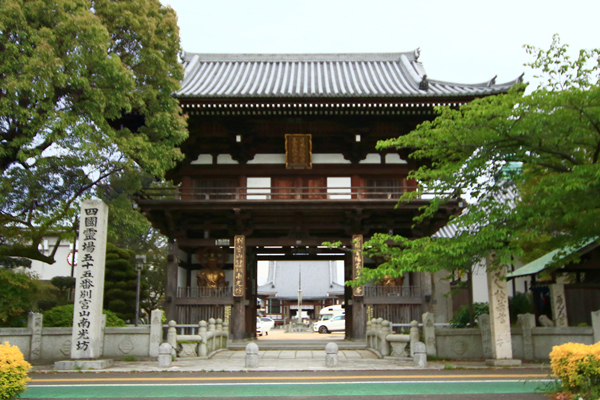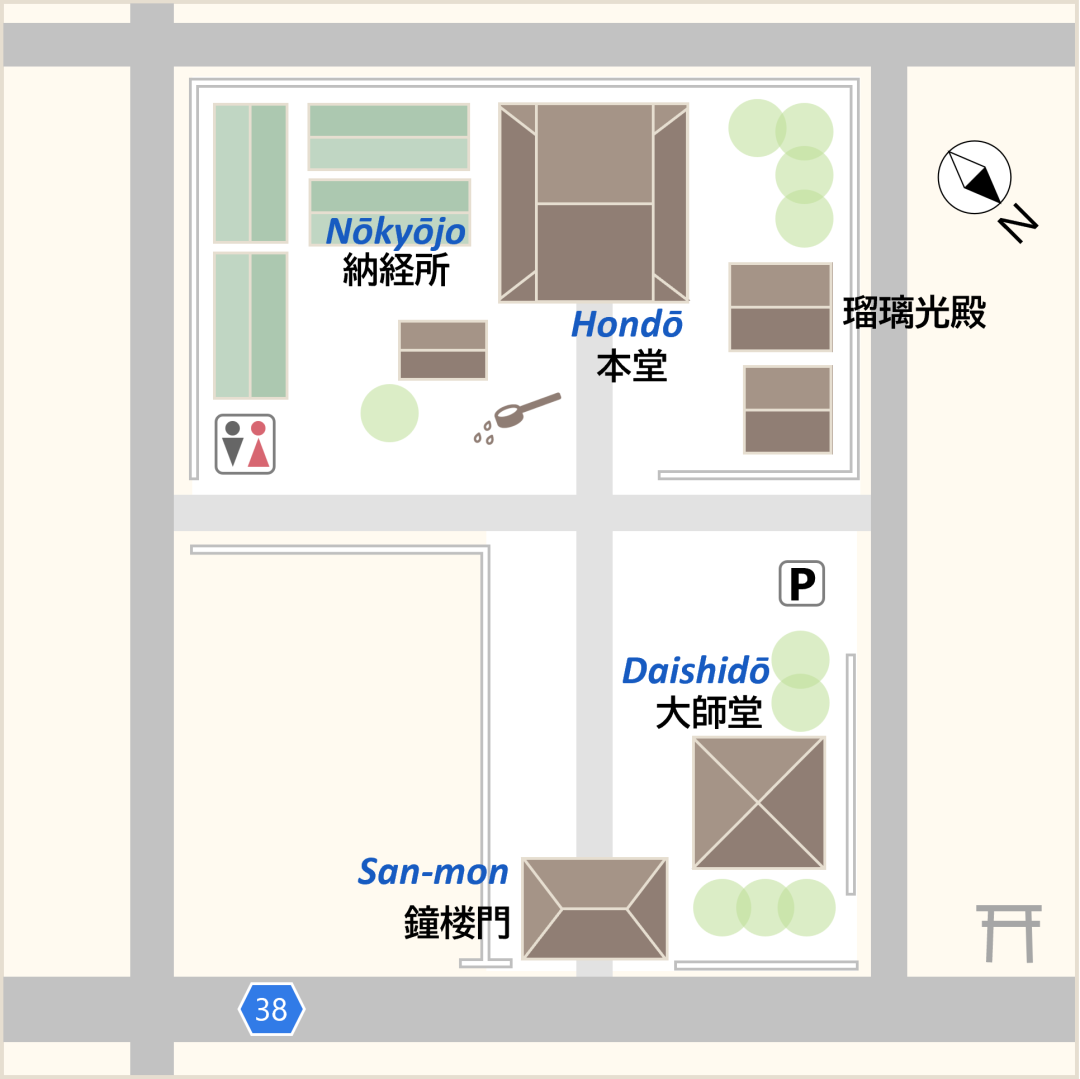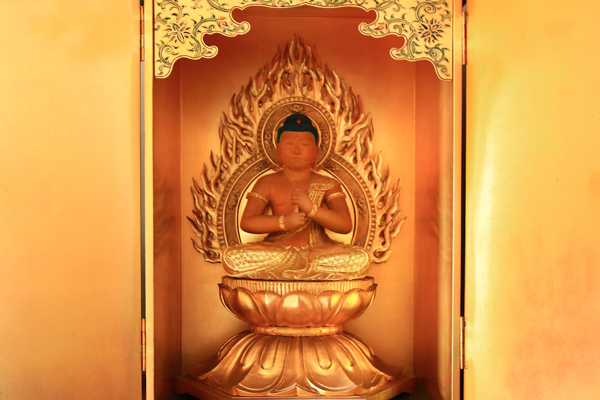The Shikoku Pilgrimage Temple Guide
Temple 55, Nankōbō

Precinct map

History of the temple
Among the Shikoku pilgrimage temples, Nankobo is the only temple with bo in its name, meaning priest’s lodging. Officially, it is called Kōmyōji Kongōin Nankōbō. It is in the center of Imabari City. It has an ancient origin and is deeply connected with the Oyamazumi Shrine, which is dedicated to the god of navigation and is the Ichinomiya (Prefectural Shrine) of Iyo (Ehime).
The shrine was built by imperial order in 594 on Omishima. In 703 Ochi Tamasumi, by order of Emperor Monmu, who was worried that the shrine's rituals were neglected due to wind and waves, moved the temple to this location and gave it the name of Jigozen of Mishima. Later Kobo Daishi visited the temple and designated it as the 55th temple of the Shikoku Pilgrimage.
The entire temple was destroyed during the Tensho period (1573-1592) by a fire that raged throughout Iyo (Ehime), but only Nankōbo was rebuilt to maintain the worship that had been conducted at the shrine. The Yakushido was rebuilt in 1600 as a prayer hall for Lord Todo Takatora. During the Edo period (1603-1868), this became a prayer hall for Lord Hisamatsu, a feudal lord, who made ritual offerings.
In 1868 the temple was completely separated from the Bekku Oyamazumi Shrine by the edicts ordering the separation of Shinto and Buddhism. A statue of Daitsuchisho Nyorai (a Buddha of the past) stands between statues of Miroku Bosatsu (Maitreya) and Kannon Bosatsu (The Bodhisattva Who Observes the Sounds of the World) in the Nankobo Yakushido (Yakushi Hall). They had originally been at the shrine. In August 1945, at the end of World War II, all the buildings except the Daishido and the Kompirado were destroyed in air raids. The current Hondo was rebuilt in the fall of 1981, the Yakushido in the spring of 1991, and the gate in 1998.
Highlights
Daitsuchisho Nyorai
This is the Buddha described in the seventh chapter of the Lotus Sutra. He was worshipped by the Kono Suigun (the navy of the former Kono clan of Iyo).
Sugegasa of Kawamura Kizan
Kawamura Kizan was the first calligrapher to receive the Japan Art Academy Prize. In 1954, while on a pilgrimage with his daughter, Kizan met the head priest of Nankōbō. When the head priest saw Kizan’s sugagasa (straw hat), he was amazed at the mastery of the calligraphy. In response to the head priest's request, Kizan donated the hat to the temple.
Kompirado
This hall enshrines Kompira Daigongen, whose main site of worship is the Kompira Shrine in Sanuki (Kagawa).

Annual Events
| January 1 - 3 | Shushoe |
| January 9 | Gohonzon Okuchiake |
| March 21, lunar calendar | Kyu Sho Mieiku (March Memorial Service for Kobo Daishi) |
| Lunar calendar June 10 | Konpira Daigongen Daihannya Tenndoku (Service of Chanting Wisdom sutras) |
| December 21 | Shimotsuki Taishi Mieiku (December Memorial Service for Kobo Daishi) |
Details
Names: Bekkuzan, Kongōin, Nankōbō
Denomination: Shingon sect, Omuro school
Principal Image: Datong Chisho Nyorai
Founder: Gyoki
Founded: 703
Access
Address: 3-1, Bekku-cho, Imabari City, Ehime 794-0026
Phone: 0898-22-2916
Parking: Available (free of charge)
Lodging: None
Official website: None
